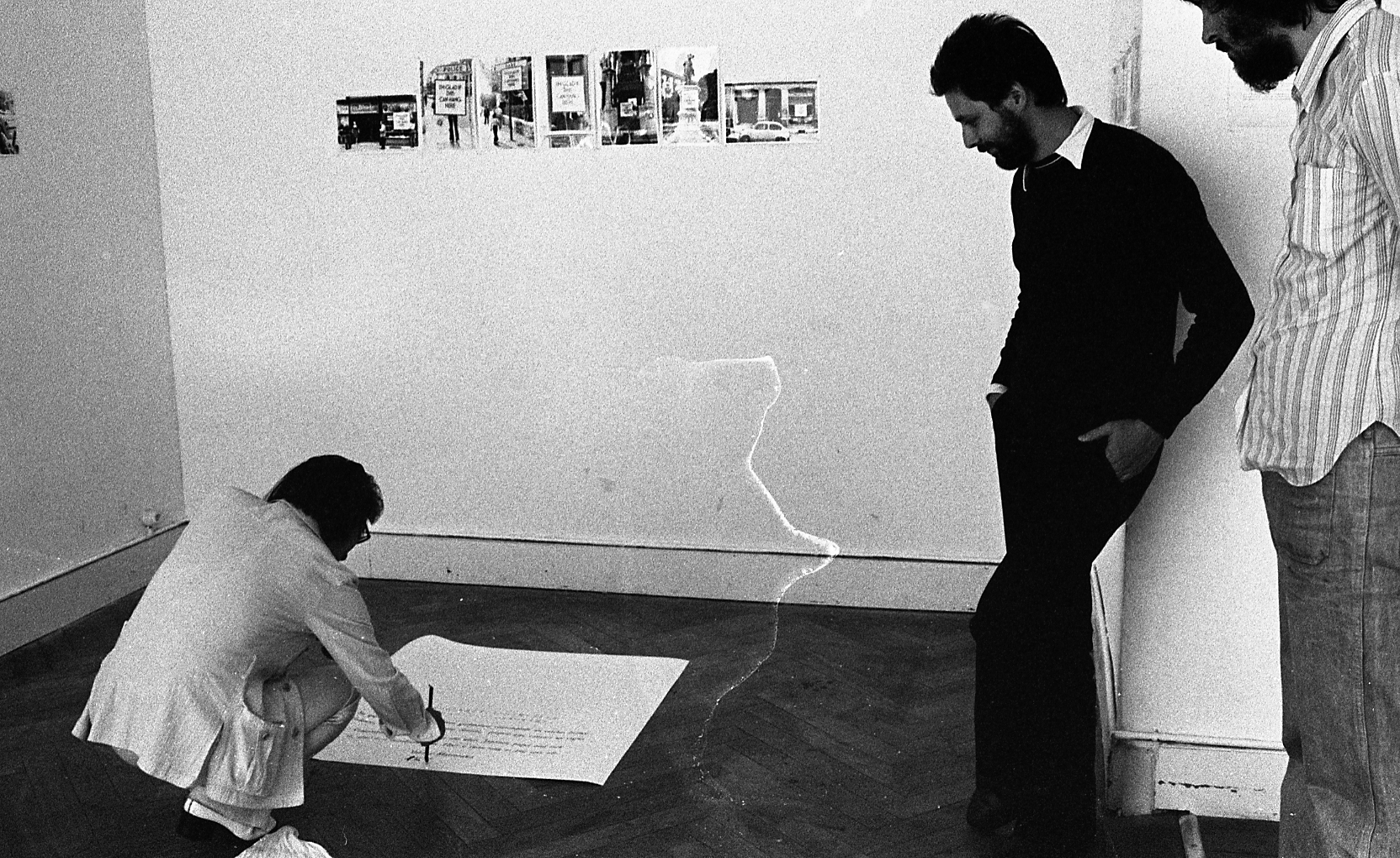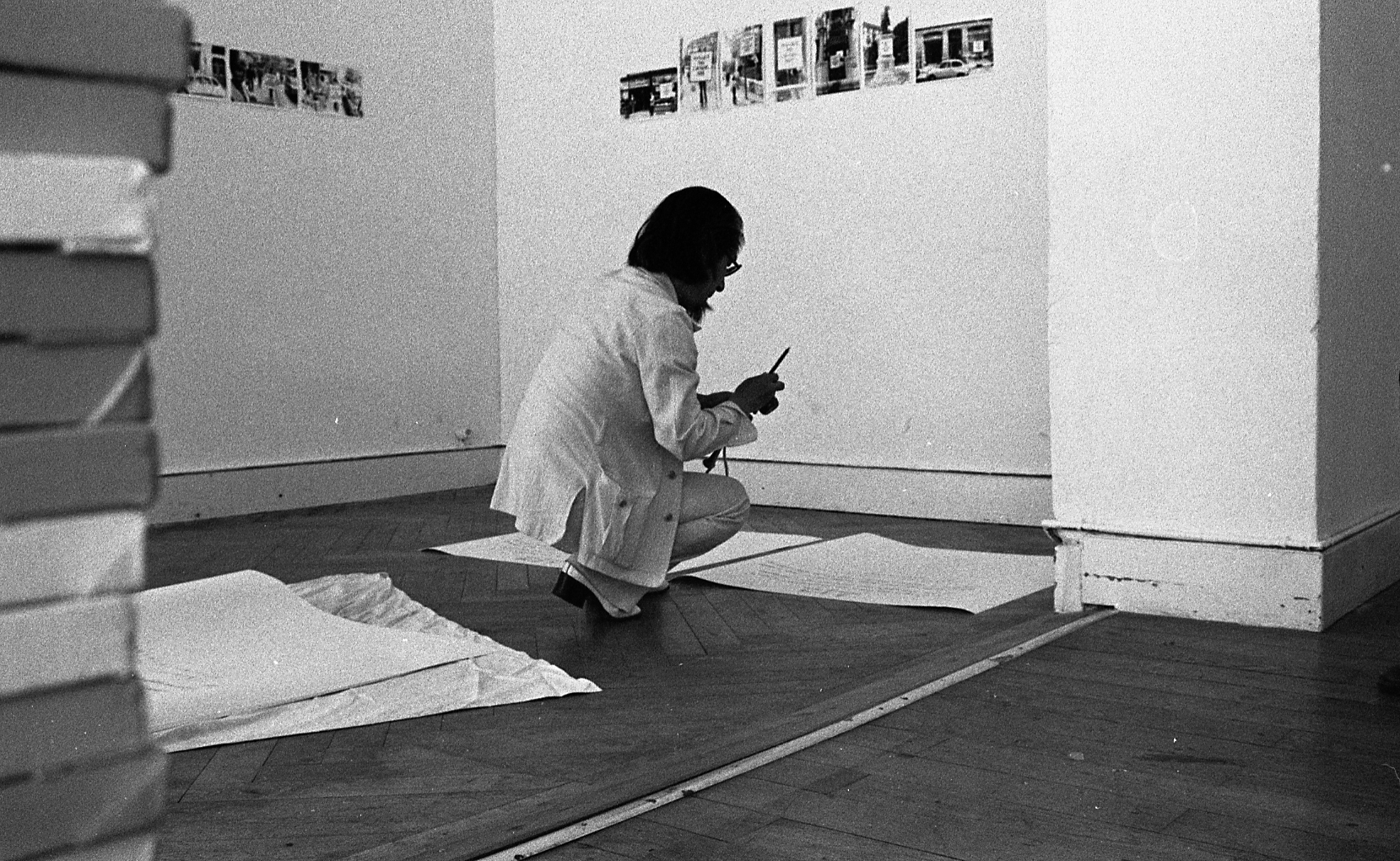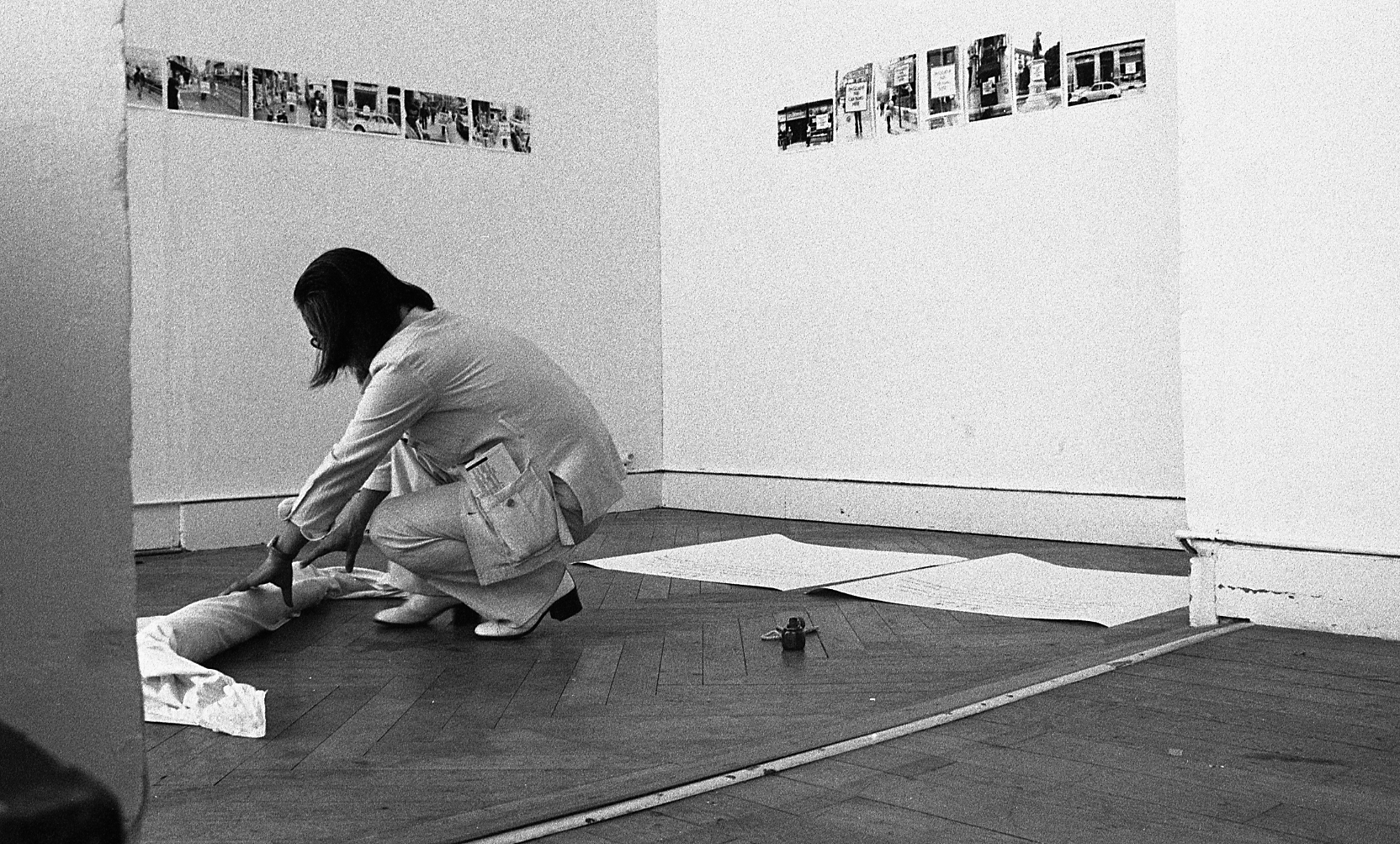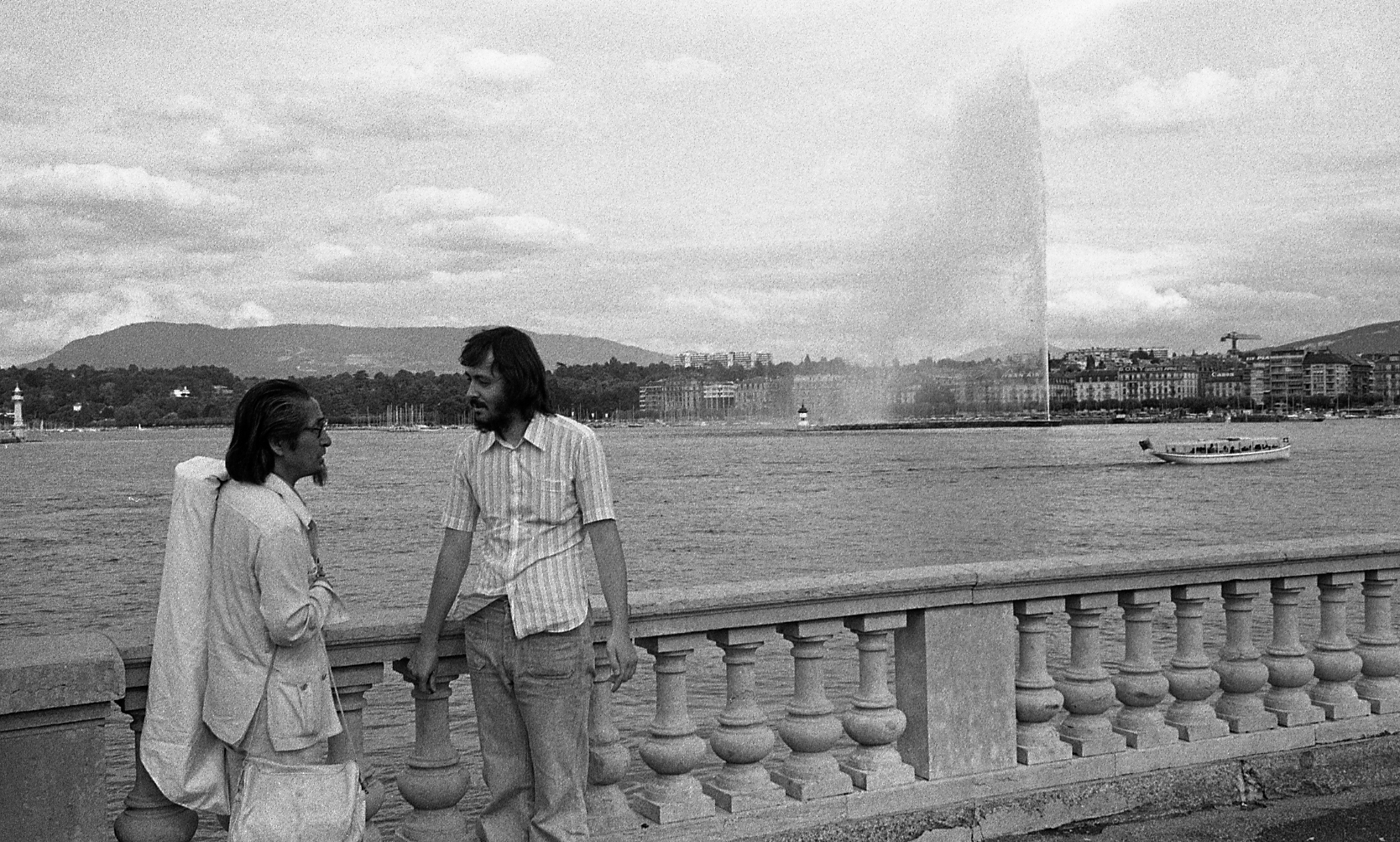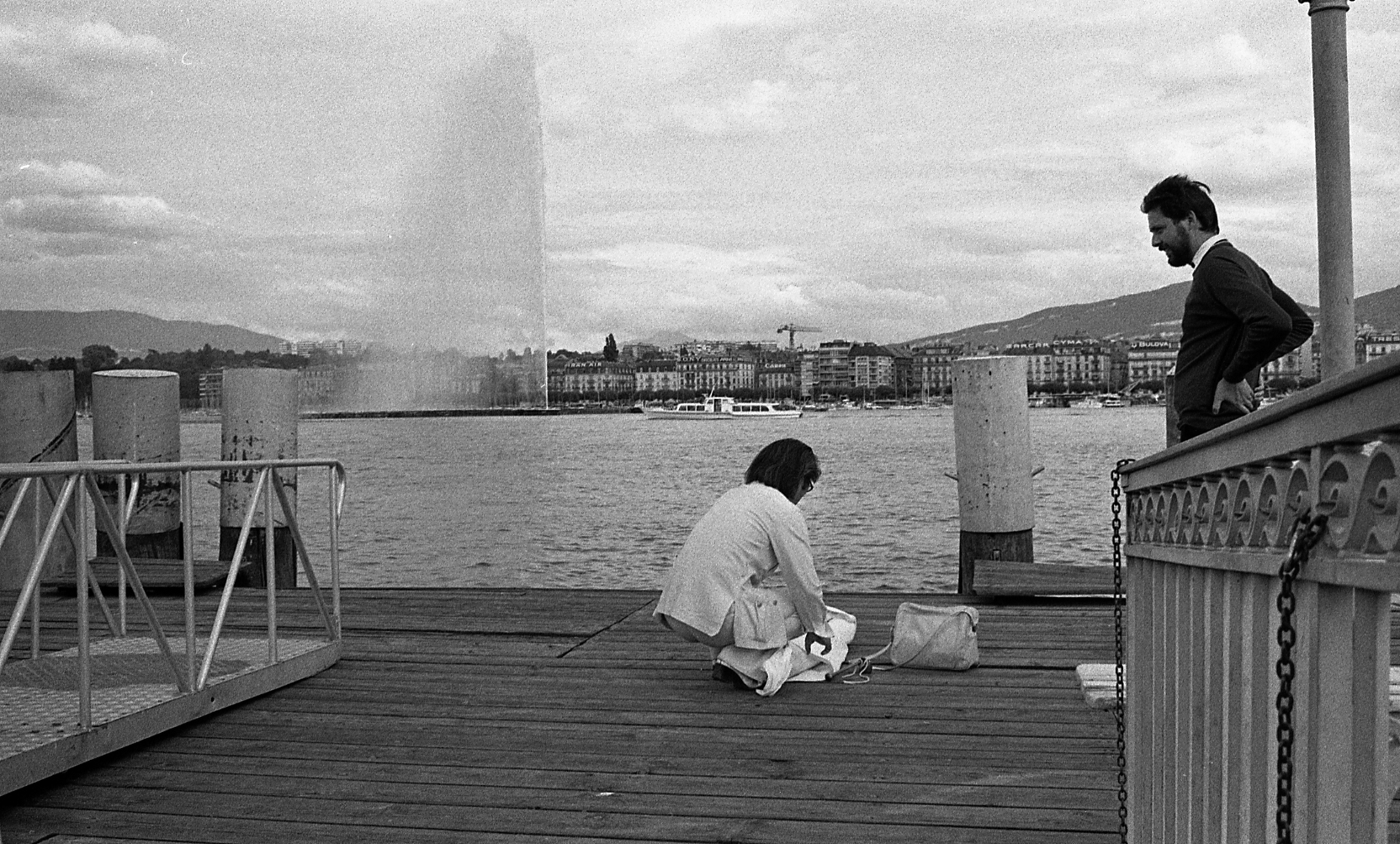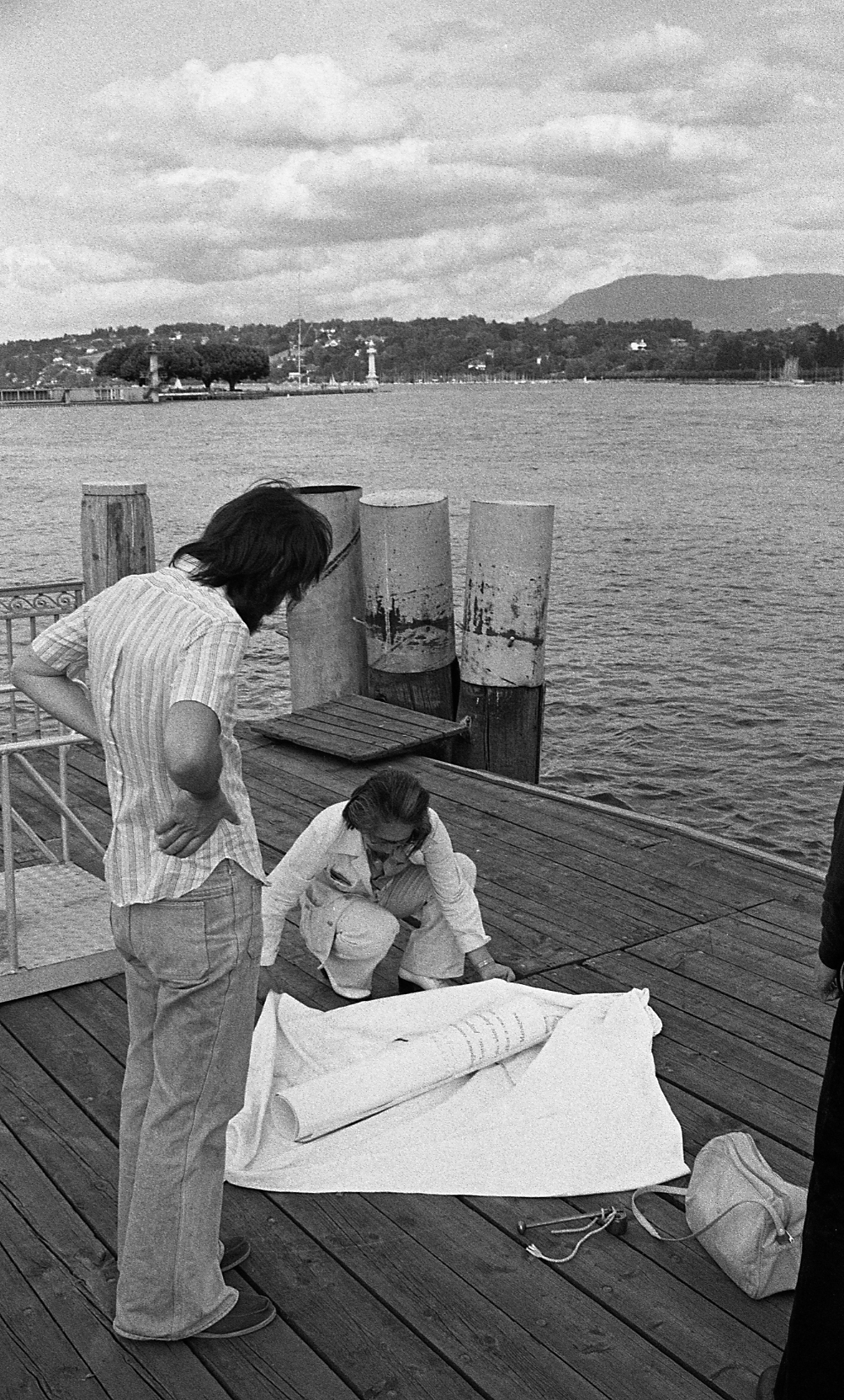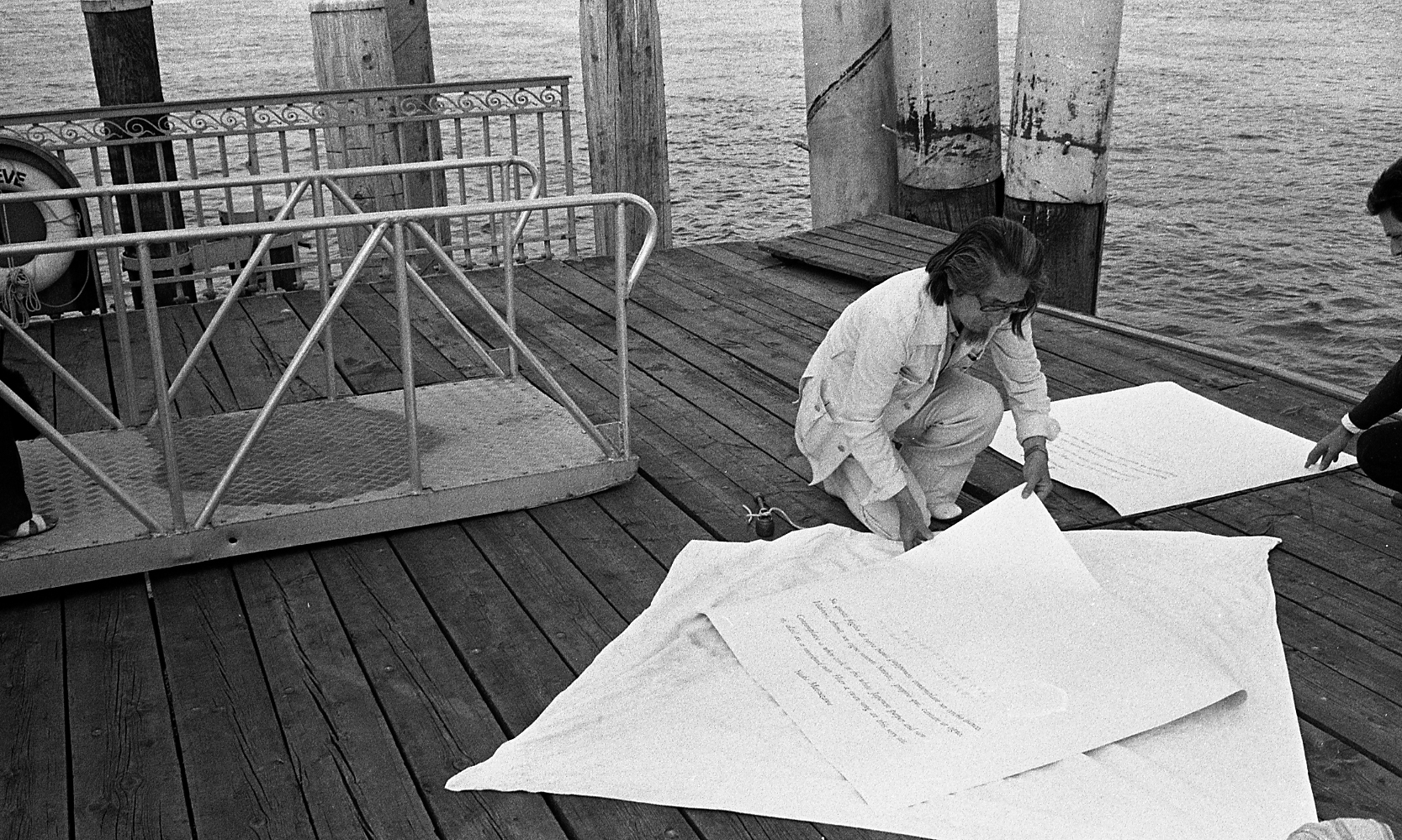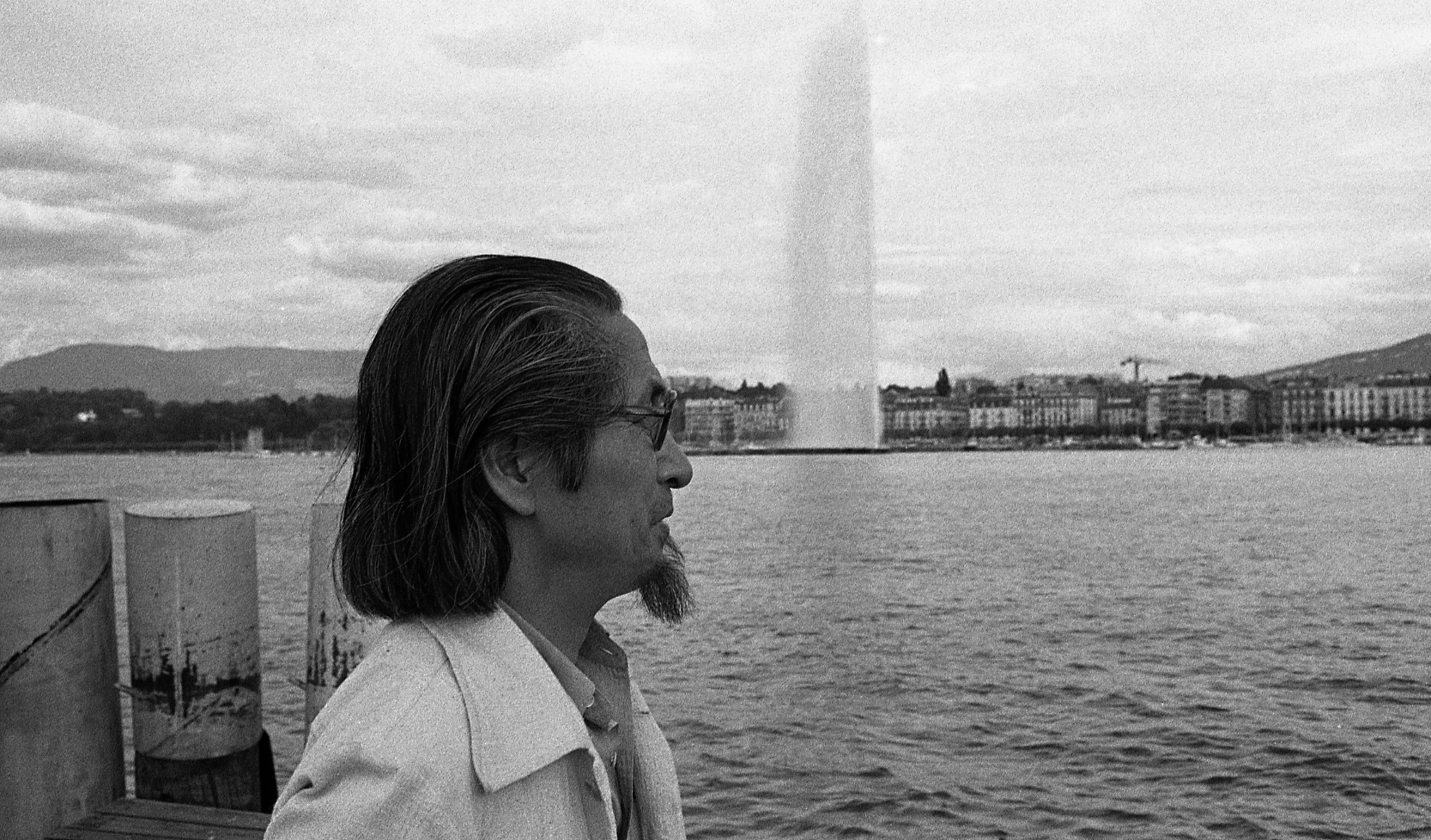Matsuzawa Yutaka
05 octobre 2022 MAMCO, Genève
Matsuzawa Yutaka
Français
En 1976, Matsuzawa Yutaka (1922-2006) se rend à Venise pour voir son travail exposé au pavillon japonais de la Biennale. L’œuvre exposée à Venise, Swan Song (« Le chant du cygne »), est une grande feuille de papier japonais qui porte l’instruction au spectateur de visualiser un cercle blanc (White Circle) sur la surface de la feuille blanche. C’est l’une des œuvres les plus représentatives de sa série de « peintures non-sensorielles », mise au point en 1964. Pour diffuser son œuvre, l’artiste avait préparé une version au format réduit (9,8 x 9,8 cm), dont plusieurs exemplaires figurent dans les archives Ecart.
Pendant le voyage de cet été 1976, Matsuzawa vient à Genève et y réalise deux performances, l’une dans la galerie Ecart, l’autre près du lac Léman. Son geste au bord du lac paraît simple : il marche vers la rive avec un paquet soigneusement roulé de grandes feuilles de Swan Song, dans l’esprit du furoshiki japonais, en dispose deux sur le sol et les signe de son nom en japonais.
Le voisinage du lac devait avoir une signification particulière pour l’artiste : de fait, en août 1967, il avait imaginé An Exhibition of Fundamental Paintings to Be Shown to the Lake (« Une exposition de peintures fondamentales à montrer au lac »), au sein de sa première Postcard Painting Series (« Peintures-cartes postales », juillet 1967-juin 1968), qui comprenait plusieurs scénarios imaginaires pour présenter son White Circle. La première carte postale de la série proposait de montrer le White Circle à « tous les êtres animés ou inanimés », bientôt suivie par la deuxième, qui impliquait le lac en tant que public inanimé de son art. Dans les suivantes, il montrait le White Circle au brouillard, à l’esprit et à l’énergie dormante, parmi d’autres êtres inanimés.
Selon Reiko Tomii, spécialiste de l’art des années 1960-1970 au Japon, Matsuzawa a développé sa version de l’art conceptuel immatériel dans les premières années de l’après-guerre et dans un isolement presque total. Cependant, dès qu’il apprit que d’autres artistes travaillaient dans le même esprit, et grâce à son association avec Art & Project, une galerie d’Amsterdam spécialisée dans l’art conceptuel et le Mail art, il commença à échanger activement avec ses collègues étrangers. Il organisa ainsi une exposition collective intitulée Nirvana au musée d’art municipal de Kyoto en 1970, qui comprenait des œuvres d’art postal (Mail Art) d’artistes tels que On Kawara, Lawrence Weiner, Gilbert & George, Stanley Brouwn ou Jan Dibbets. Il poursuivit en lançant à un appel à participation internationale pour une succession d’expositions d’œuvres postales intitulées World Uprisings (« Révoltes mondiales »), de 1971 à 1973. A Genève, Matsuzawa essaya de développer son réseau de manière analogue : dans une lettre à Ecart, datée du 19 octobre 1976, il invite ainsi les artistes du groupe à participer à une exposition qu’il co-organisait à la galerie Maki de Tokyo, Pan-Conceptuals ’77. Ce titre, avec le préfixe englobant « pan », explicitait éloquemment l’ambition constante de l’artiste de créer un réseau mondial.
English
In 1976, Matsuzawa Yutaka (1922–2006) visited Venice to view his work at the Japanese pavilion of the Biennale. The work exhibited in Venice, Swan Song, is a large sheet of Japanese paper, which carried his command to the viewer to visualize a White Circle therein. It is of the most fundamental example of his signature series Non-Sensory Painting, which he started in 1964. To widely disseminate his work, the artist prepared a small version (9.8 x 9.8 cm) of Swan Song, some examples of which are in the Ecart Archives.
During his trip that summer of 1976, Matsuzawa traveled to Geneva where he gave two performances, one at Ecart’s gallery and the other by Lake Geneva. His act appears simple: he walked to the lakeshore with a neatly rolled package of large Swan Song sheets wrapped in the Japanese manner of furoshiki, took them out, spread two of them on the ground, and signed his name in Japanese.
The lakeside location must have had a particular resonance to the artist: in fact, in August 1967, he envisioned An Exhibition of Fundamental Paintings to Be Shown to the Lake, as part of his first Postcard Painting Series (July 1967–June 1968), which featured various scenarios for presenting his White Circle. In the first postcard in the series, he proposed to show his White Circle to “all living and non-living beings,” which was followed by this second postcard engaging the lake as a non-living audience of his art. In the subsequent postcards, he showed his White Circle to the mist and the spirit and dormant energy, among other inanimate things.
According to Japan’s Postwar art specialist Reiko Tomii, Matsuzawa developed his version of immaterial conceptualism from the immediate postwar years, virtually in isolation. However, once he became aware of like-minded artists in Europe and America, through his association with Art & Project, a gallery in Amsterdam that specialized in Conceptual and Mail art, he began to actively connect with his international counterparts. He organized a group exhibition, Nirvana, at the Kyoto Municipal Museum of Art in 1970 that included Mail art works from such artists as On Kawara, Lawrence Weiner, Gilbert & George, Stanley Brouwn, and Jan Dibbets. He went on to call for transnational entries for a series of Mail art exhibitions titled World Uprisings in 1971-73. In Geneva, Matsuzawa tried to network in a similar manner: in a letter to Ecart, dated October 19, 1976, Matsuzawa invited the artists of the group to participate in an exhibition he was co-organizing at Maki Gallery in Tokyo, Pan-Conceptuals ’77, in January 1977. The title with the all-encompassing prefix “pan” eloquently translates the artist’s continuing ambition to generate a global network.

